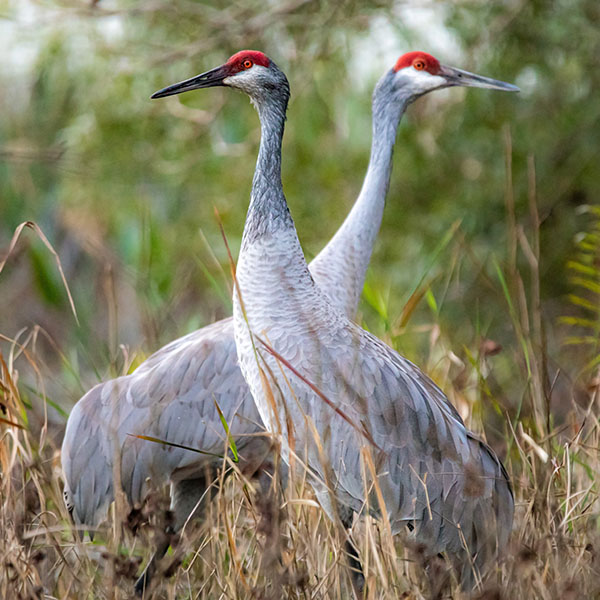Sandhill Crane
Grus canadensis

Animal Ambassadors
Although sandhill cranes are found mostly in Canada and Alaska during the summer, these migratory birds pass through the western United States in flocks of up to 10,000 individuals! These birds are wetland specialists, wading through marshes to forage for plants, grains, berries, mice, amphibians, snails, worms, or insects. They are socially monogamous, meaning that the same pair will build a nest and raise young together year after year. Mates are selected after elaborate displays, where the displaying birds bow, leap into the air, flap their wings, and throw sticks or other vegetation. Bonded pairs will also frequently call in unison during mating season, singing loudly back and forth. Although sandhill cranes are one of the few crane species that are not currently endangered, they are at risk of significant population decline because they reproduce slowly, with an average of only one chick surviving per year for each breeding pair. This makes it especially important to conserve and protect the wetlands that these birds call home.
Seeds, berries, tubers, insects, small vertebrates
Scattered across much of North America
Up to 20 years / 30 years
Freshwater marshes and mudflats
6.5-7 ft
7.5-11 lbs
